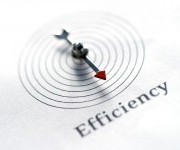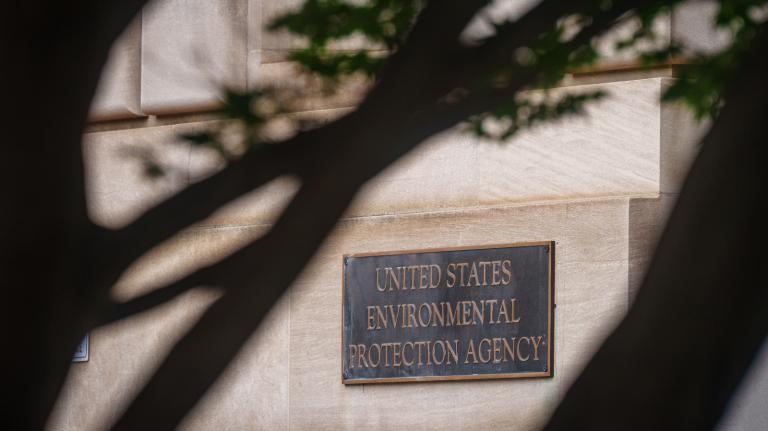 Dr. Grist fills in the blanks.We are not going to solve climate change.
Dr. Grist fills in the blanks.We are not going to solve climate change.
That’s not pessimism — it’s just not the kind of thing that can be “solved.” It’s already underway. There’s enough carbon stocked in the atmosphere to keep the temperature going up for decades even if we cease polluting entirely, which isn’t going to happen. Climate change won’t be solved, it will be managed, by us, by our kids, by our grandkids. As presidential science advisor John Holdren is fond of saying, we’ll end up with some mix of mitigation, adaptation, and suffering. What’s left to us is the ratio.
We are locked into fossil fuel infrastructure, brittle in the face of severe weather and unexpected disasters, unprepared for what’s coming, and making very little progress. So I think common sense argues for action — lots of it, and quickly. If we hope to manage both climate change and energy access for poor and developing nations, we will have to use far less energy overall, generate far more from low-carbon sources, and use biophysical resources far more efficiently and effectively. We will need large-scale changes that ramp up quickly and are sustained over many decades: changes in energy, land use, transportation, manufacturing, and food production. How can we start and sustain those changes?
F*ck if I know! Or anybody else, really. But I’ve got this blog machine so I might as well hazard a guess.
When it comes to energy, I think we’ll ultimately require a fourfold approach. Think of these as four legs of a stool, each mutually reinforcing; I doubt we can get where we need to go without all of them. (Yes, the metaphor would have worked better with three stool legs, but I have four bullet points, dammit.)
1. For the short-term: To drive the cheapest, fastest pollution reductions, put a steadily rising price on carbon. Start it low if you need to. Preferably it would be a transparent, economy-wide price on carbon with the revenue split between reducing the payroll tax and funding other efficiency and clean energy programs. And preferably, my horse would be a unicorn. But just about any price, no matter how compromised or opaque (see: EPA regs), is better than the absurd status quo of no price at all. We mock Europe’s Emission Trading System, but it’s been getting progressively better, and WTF are we doing anyway?
We shouldn’t think of a price on carbon as a panacea. Without being prohibitively high and punitive, it’s won’t be sufficient in itself. But we shouldn’t underestimate it either. After all, it’s recommended by four out of five economists, and when are they ever wrong?
2. For the short- to mid-term: Encourage massive deployment of existing clean energy and efficiency technology. Lots of folks, including many economists, are leery about this — “choosing winners”! — but I think it’s essential. For one thing, it’s the most effective form of R&D. Learning by doing, economies of scale, and market discipline drive costs down more reliably than any lab research, particularly in the proximate future. For another thing, we just don’t have time to wait.
There are lots of ways to encourage deployment. In the U.S., we’re trying on-again off-again tax credits, unambitious CAFE standards, and a patchwork of state rules and mandates … against a backdrop of massive fossil fuel subsidies. That turns out to be a pretty terrible strategy. I much prefer policies like Japan’s Top Runner program [PDF], Germany’s feed-in tariffs, feebates, output-based standards, and energy-efficiency resource standards. But again, you take what you can get.
3. For the mid- to long-term: Massively ramp up the U.S. innovation machine. Above all that means raising the U.S. energy R&D budget from its abysmally, shamefully low level. The stimulus package pumped some money in, but the situation hasn’t fundamentally changed from 2006, when Greg Nemet and Dan Kammen said, “a five to ten-fold increase in energy R&D investment is both warranted and feasible.” Late last year, the President’s Council of Advisors on Science and Technology recommended tripling the U.S. energy research budget.
It will mean spending lots of money — no way around it — but there are all manner of prizes, programs, and partnerships that can draw in private capital as well. This is where the Breakthrough Institute has done some great work: I recommend their “Where Good Technologies Come From” and Fred Block’s book State of Innovation: The U.S. Government’s Role in Technology Development.
4. For the mid- to long-term: Invest in infrastructure. As anyone who’s been to, say, Hong Kong will tell you, America is crumbling. On the latest infrastructure report card, the U.S. earned an ignominious overall grade of D. We’ve been under-investing in infrastructure for decades and to catch up we will need to spend around $2.2 trillion over the next five years.
If we are to reach anything approaching our sustainability goals, we’ll need tons of new electricity generation, transmission, distribution, and control tech. We’ll need high-speed trains and regional trains and public transit and electric-car charging stations. We’ll need bulked up freight rail and broadband and sea walls to keep out rising oceans. We’ll need a national retrofit program. Luckily, investing in that stuff creates millions of jobs (handy in a time of high unemployment and low demand) and pays off richly in new economic activity. For more on this, see the World Economic Forum’s “Green Investing 2011” reports.
So, that’s the fourfold approach. Now, at risk of making this post even longer, a few things to note about the four policy buckets above:
• They are complementary. Global leaders in clean energy, like California and Germany, are using a mix of all four. People spend a lot of time bashing one or the other because it doesn’t solve all the problems at once. (“A carbon price doesn’t spur innovation!” “R&D doesn’t reduce emissions!” Etc.) But they all do good things and they’re all eventually going to be necessary.
• The climate bill that passed the House had some of all four. The way people talk about the climate bill these days, you’d think it was nothing but cap-and-trade. There’s no denying capping carbon was the big focus, especially by Environmental Defense Fund and allied groups — and contrary to conventional wisdom, there were good reasons for that — but when it came time to write legislation, the result was actually a balanced and diverse set of policies. The press and the bill’s opponents on both the right and left managed to ignore that fact so thoroughly it has vanished from history.
• The U.S. is doing all of them poorly. Really. At the federal level we’re blowing it, across the board.
• They vary widely in terms of popularity and feasibility. The political dynamic is different each case. Pursuing them will require different coalitions and different strategies. I’ll have much more to say about this in my next post, so for now I’ll leave it at that.
(If you made it this far down, you might be amused to know that this entire post was originally supposed to be the introduction for another post. My life!)




